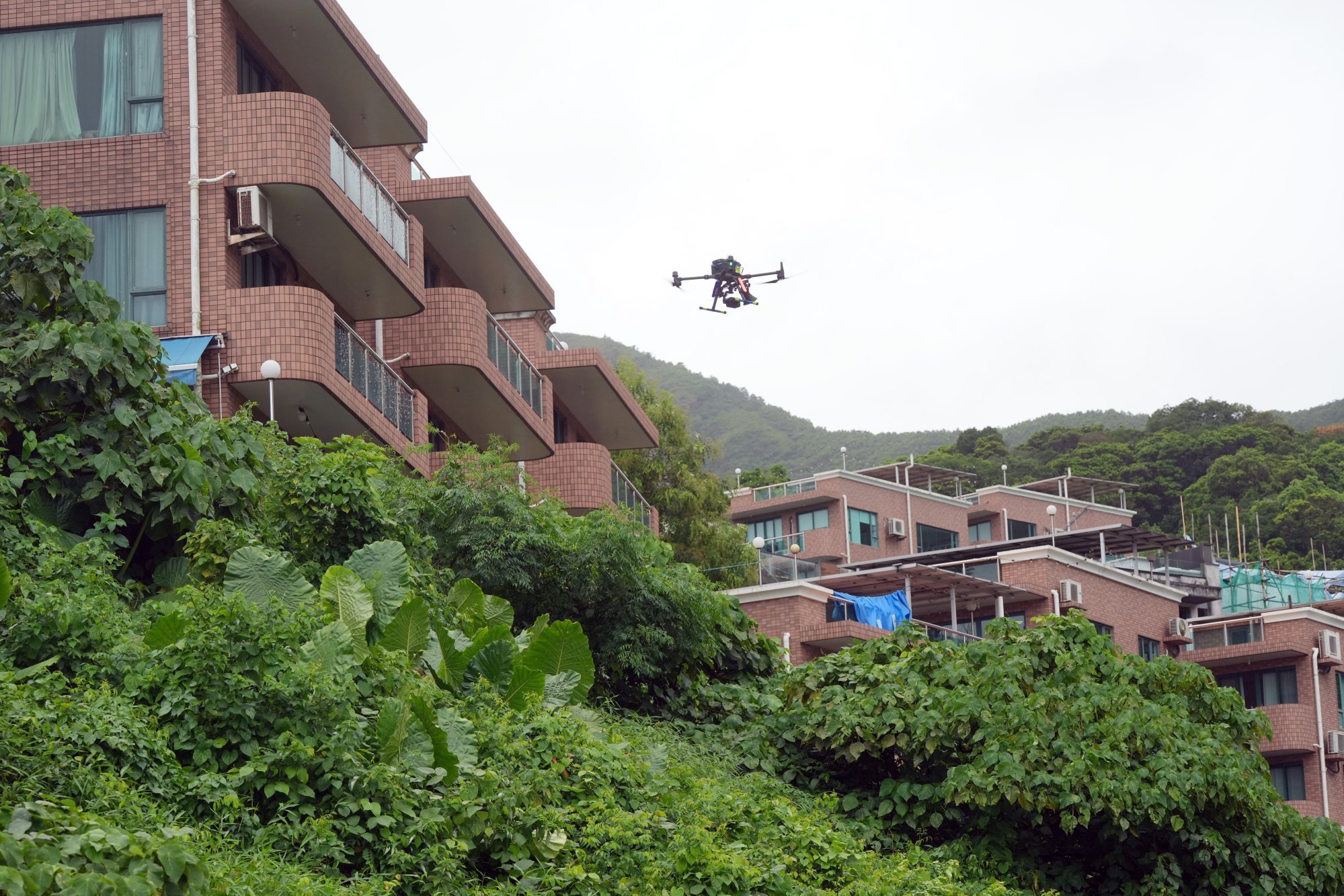Drones will patrol areas with concentration of old tenement buildings, where scaffolding is common, in bid to prevent burglaries, insider says. — SCMP
Hong Kong police will introduce drone patrols in urban areas in the second half of the year in a bid to prevent burglaries, the Post has learned.
A source revealed that the drones would be used to patrol areas with a concentration of old tenement buildings, such as Yau Tsim Mong and Sham Shui Po districts in Kowloon.
“One of the purposes will be to tackle burglaries, targeting buildings covered with scaffolding,” the insider said.
“That’s why the patrols will be launched in areas with more tenement buildings, as renovation works for ageing buildings require the use of scaffolding, and that is an easy spot for burglars.”
The source added the force would also carry out trials of drone patrols at the city’s border police district in the northern New Territories for security purposes.
In December of last year, Secretary for Security Chris Tang Ping-keung told lawmakers police would use drones for patrols should regulations allow it. The patrols would take place on set routes planned ahead of operations to avoid residential areas.
Tang said during the meeting that police drones would feature flashing red and blue lights to “show that they are on a mission”, as well as display reflective labels or symbols for identification.
The source said the drones were expected to fly around tenement buildings to monitor them for any suspicious people climbing scaffolding, but officers watching the drone footage would also be able to recognise authorised repair works.
“Officers can also have discussions with the owners of the building. If we see people climbing the scaffolding, we can ask them if they have repair works going on,” the insider explained.
The source added that the urban drone patrol operations would comply with the city’s privacy laws.
The force has been using drones to broadcast messages in Sheung Sze Wan in Sai Kung and residential areas in Clear Water Bay to ask residents to remain vigilant against burglaries and report any suspicious activity in nearby bushland and forests since July of last year.
The messages were broadcasted in Cantonese, English and Bahasa Indonesia.
Police have also been using drones at remote sites to detect suspicious people hiding in rough terrain and at busy large-scale events to monitor crowds and traffic flows.
A separate source said drones had already been deployed in seasonal anti-burglary patrols in some rural areas in the city.

There were 1,220 burglary cases last year, a drop of 9.9% over the 1,354 cases in 2023 and the second-lowest figure since records began in 1969. The force said the detection rate of burglary cases last year stood at 38%, the second-highest since records began in 1977.
Security minister Tang also revealed last year that about 800 members of the disciplined services were qualified to handle sophisticated drone operations, holding an advanced rating from the Civil Aviation Department.
Drones are also used in daily police operations in mainland China. Shenzhen’s Public Security Bureau said the city had 1,667 drone pilots working for authorities, conducting 149 air patrols each day on average last year.
Police Commissioner Joe Chow Yat-ming, who assumed the top job on April 2, earlier revealed the force would study using robots and robot dogs to reduce manpower.
He said the force was researching whether robots could be used to catch thieves, perform other types of work or go out on patrol.
Several mainland provinces currently deploy robot dogs for policing purposes to enhance efficiency. Chow said the force was in discussion with mainland authorities to explore how robot dogs could be deployed.
The United States also uses robot dogs for policing. – South China Morning Post





